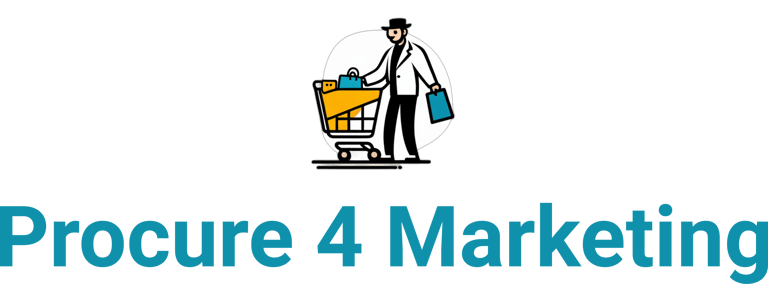Exploring Cost-Reduction Procurement Strategies
Learn 7 proven cost-reduction strategies for procurement, from leveraging bulk purchasing and technology to building better supplier relationships.
SUPPLY CHAIN
The Procure 4 Marketing Team
12/18/20233 min read


Quick Answer: What are the best cost-reduction strategies in procurement?
The best cost-reduction strategies in procurement focus on maximizing value, not just cutting prices. The 7 most effective strategies are: 1) Leveraging Bulk Purchasing, 2) Mastering Negotiation, 3) Using E-Procurement Technology, 4) Building Collaborative Supplier Relationships (SRM), 5) Implementing Sustainable Procurement, 6) Streamlining Processes, and 7) Proactively Managing Risk. These strategies work together to lower the Total Cost of Ownership (TCO) and improve the company's profitability.
What is Cost-Reduction in Procurement?
Cost-reduction in procurement is the strategic process of lowering the expenses involved in acquiring goods and services without compromising on quality or operational efficiency. The goal is to get the best possible value for every dollar spent. It’s not about finding the cheapest option; it’s about finding the smartest one that supports the company's long-term success.
7 Proven Cost-Reduction Strategies for Procurement
Here are seven proven, actionable strategies that procurement teams can implement to achieve significant cost savings.
1. Leverage Bulk Purchasing (Economies of Scale)
Buying in larger quantities allows you to take advantage of volume discounts. Suppliers are often willing to offer lower per-unit prices for larger orders because it guarantees them more business and simplifies their logistics.
Actionable Example: A restaurant chain can consolidate its orders for non-perishables like napkins and cleaning supplies across all its locations into a single, massive monthly order. This gives them the leverage to negotiate a 15% volume discount from the supplier.
2. Master Strategic Negotiation
Effective negotiation is more than just haggling over price. It's about finding a win-win scenario that benefits both your company and the supplier.
Actionable Example: Instead of just asking for a lower price on a key software subscription, offer the supplier a longer, 3-year contract in exchange for a 10% price reduction. The supplier gets long-term business security, and you lock in a lower price.
3. Optimize with Technology (E-Procurement)
Use technology to automate tasks, improve efficiency, and gain visibility over company-wide spending.
Actionable Example: Implement an e-procurement platform like SAP Ariba or Coupa. You can create an online catalog where employees can only order from pre-approved, pre-negotiated suppliers. This eliminates "rogue spending" and ensures everyone gets the negotiated rate.
4. Build Collaborative Supplier Relationships (SRM)
Treat your key suppliers like strategic partners, not just vendors. Open communication and collaboration can uncover hidden cost-saving opportunities.
Actionable Example: Hold a quarterly business review with a key packaging supplier. In the meeting, you can brainstorm ways to reduce costs together, such as redesigning a box to use less material or optimizing delivery schedules to save on fuel.
5. Implement Sustainable Procurement
Focusing on sustainability and reducing waste can lead to significant cost savings.
Actionable Example: A manufacturing company can work with a key supplier to switch from disposable cardboard packaging to a reusable, returnable crate system. This eliminates the recurring cost of buying new boxes and reduces waste disposal fees.
6. Streamline the Procurement Process
Complexity costs money. Simplify your internal procurement workflows to reduce administrative overhead and processing time.
Actionable Example: Create a clear policy that allows department managers to approve purchases up to $500 on their own, without needing multiple levels of sign-off. This frees up the procurement team to focus on high-value strategic negotiations instead of small, routine orders.
7. Proactively Manage Risks
Preventing a problem is always cheaper than fixing one. A proactive approach to risk management can save you from costly disruptions.
Actionable Example: For a critical component, a company can qualify two different suppliers in two different geographic regions. Even if one supplier is slightly more expensive, this multi-sourcing strategy acts as a cheap insurance policy against a shutdown caused by a natural disaster or political issue in one region.
Frequently Asked Questions (FAQ)
Q1: What is the "Total Cost of Ownership" (TCO)?
TCO is a financial principle that calculates the full lifecycle cost of a purchase. It includes not just the initial purchase price but also all direct and indirect costs, such as shipping, installation, training, maintenance, and disposal. A cheaper product might have a much higher TCO, making it the more expensive option in the long run.
Q2: What's the difference between cost-reduction and cost-avoidance?
Cost-reduction is an actual decrease in spending against a historical baseline (e.g., negotiating a price from $10 to $9). Cost-avoidance is an action that prevents paying a higher price in the future (e.g., locking in a price for three years to avoid an anticipated 10% price increase next year).
Q3: How can a small business reduce procurement costs?
Small businesses can start by consolidating their purchasing with a smaller number of preferred suppliers to increase their buying power. They can also join a Group Purchasing Organization (GPO), which pools the purchasing volume of many small businesses to negotiate bulk discounts that they couldn't get on their own.

